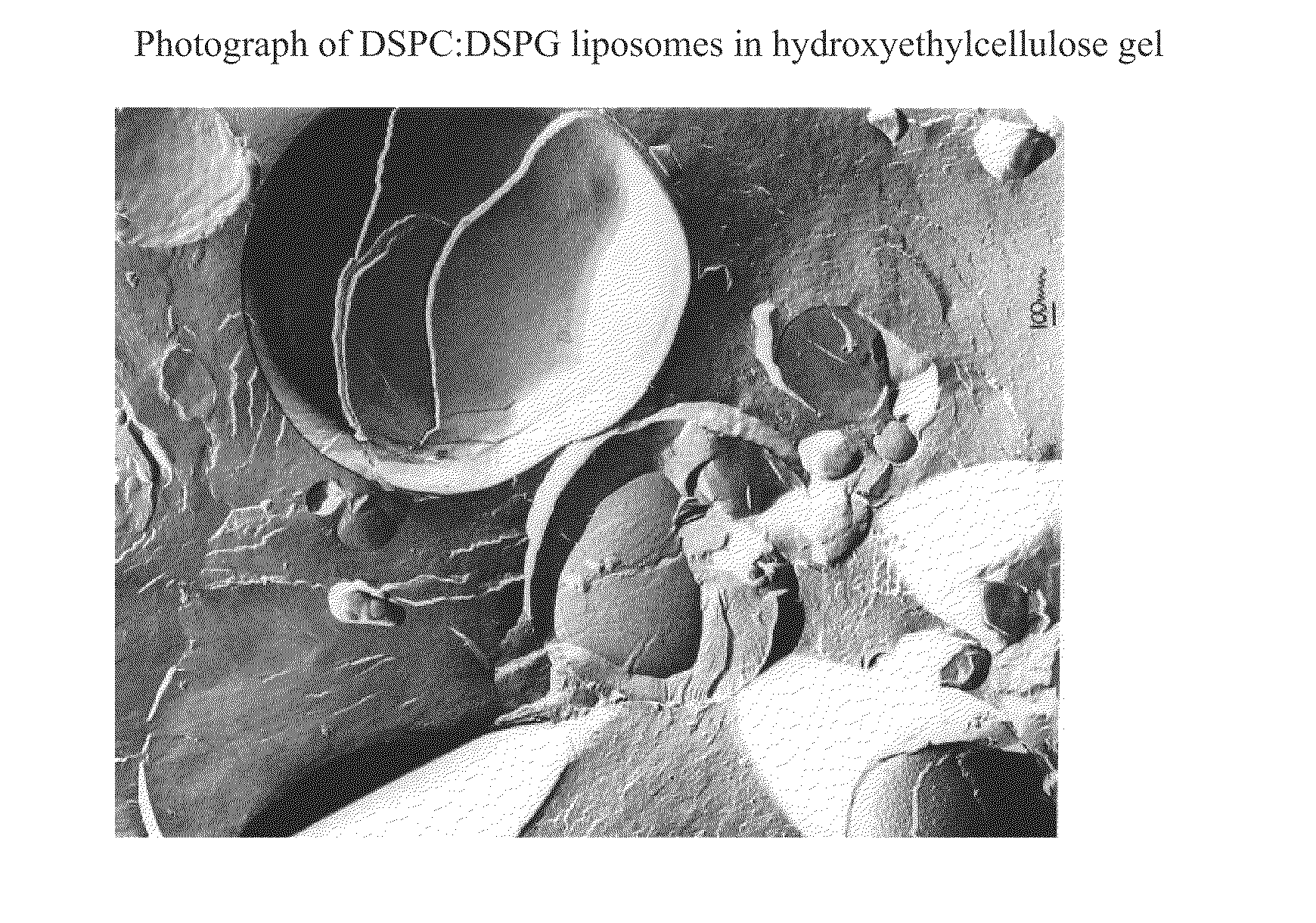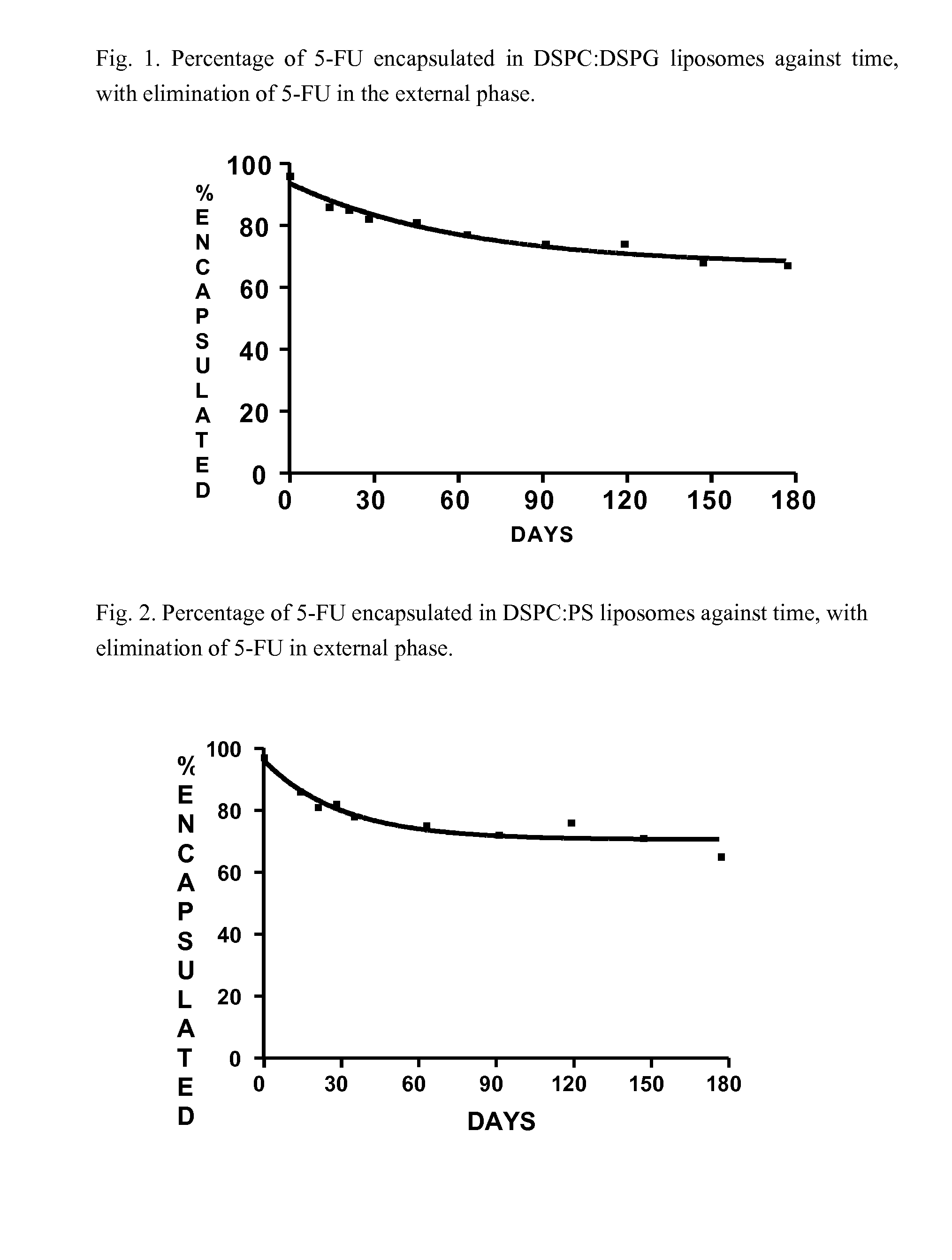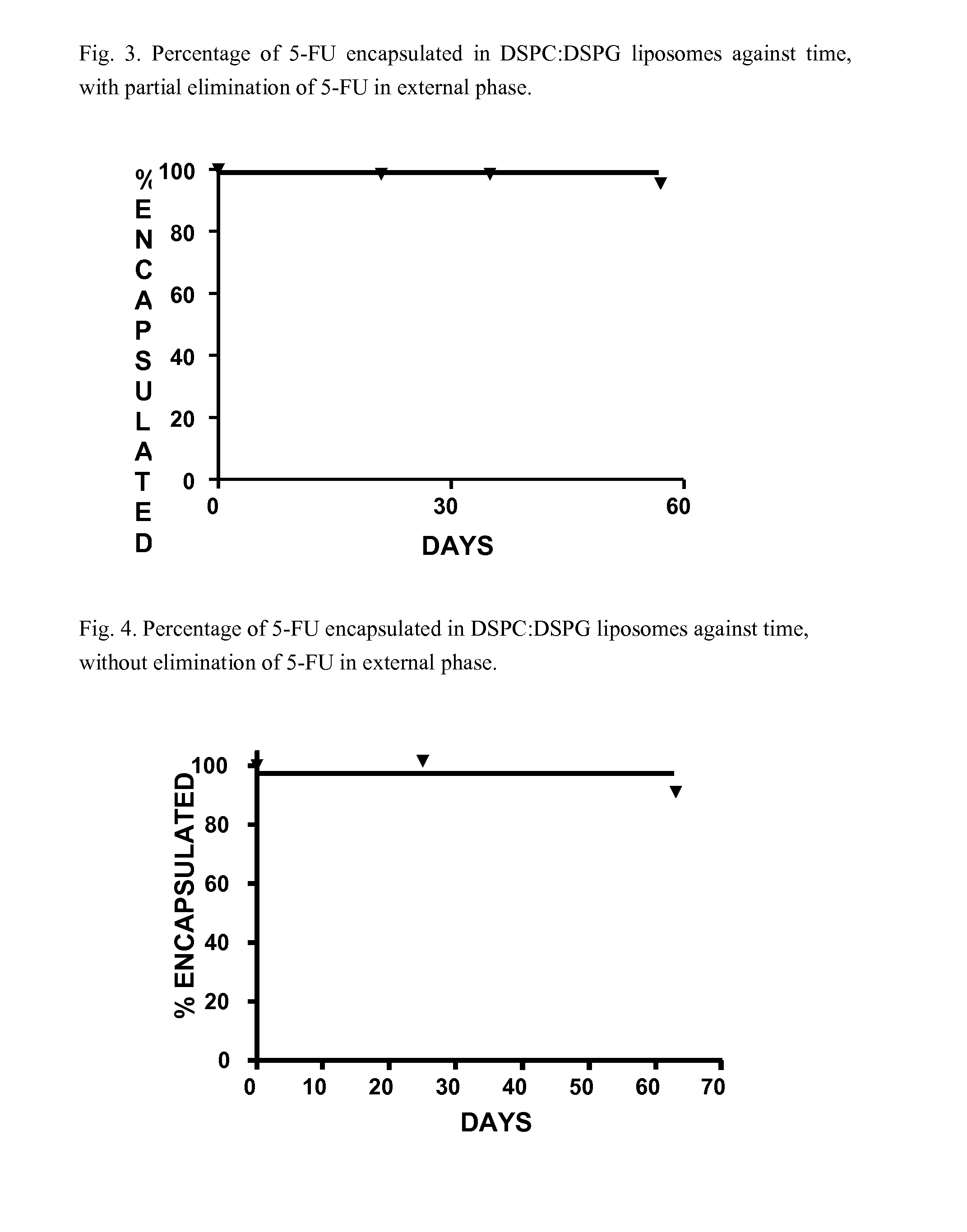Liposomal formulations
a technology of liposomes and formulations, applied in the field of liposome formulations, can solve the problems of not always predictable, the ratio of stability and retention of active ingredients inside the liposomes, and achieve the effect of reducing adverse side effects
- Summary
- Abstract
- Description
- Claims
- Application Information
AI Technical Summary
Benefits of technology
Problems solved by technology
Method used
Image
Examples
example 1
Encapsulation of 5-FU in Liposomes of DSPC:DSPG Composition, without 5-FU in External Phase
[0073]384 mg of DSPC, 43 mg of DSPG, 4.5 g of glass beads and 9 ml of chloroform:methanol mixture at a ratio of 2:1 v / v is added to a rotary evaporator flask. Once the lipids are dissolved in the solvent mixture, the flask is connected to the rotary evaporator, and the temperature of the bath is adjusted to 40° C., and the solvent evaporates at a reduced pressure (800 mbar) until a lipid film is formed on the walls of the flask. Then the pressure is reduced 100 mbar and it is maintained for 1 hour. Finally, the flask is removed from the rotary evaporator and it lyophilises overnight to eliminate possible traces of organic solvent. The lipid film formed is hydrated by stirring it with 9 ml of an aqueous solution of 5-FU (50 mg / ml, pH 8.8) at 65° C. for 1 hour. Later, the mixture is stirred for another hour at 30° C.
[0074]The liposomic suspension formed is extracted through 2 μm polycarbonate fi...
example 2
Encapsulation of 5-FU in DSPC:PS Liposomes, without 5-FU in the External Phase
[0079]This is carried out in a similar way to the example but by substituting DSPG with PS as negatively charged phospholipid. In this case, the concentration of total 5-FU came to 0.600 mg / ml, with 96.5% initially encapsulated and a 5-FU / lipid molar ratio of 0.7.
[0080]FIG. 2 shows the evolution in the percentage of encapsulated (expressed in percentage of the initial) over 6 months at 25° C. The kinetics are similar to those observed in the previous example, which stabilises at 71% of encapsulated 5-FU (C.I. 95%=66-75).
example 3
Encapsulation of 5-FU in DSPC:DSPG Liposomes, with Partial Elimination of 5-FU in the External Phase
[0081]This is carried out in a similar way to example 1 but carrying out the diafiltration with only 3 volumes of buffer, so that not all of the non-encapsulated 5-FU is eliminated. The suspension of liposomes is diluted until a concentration of total 5-FU of 3.41 mg / ml is reached, 71% of which is encapsulated inside the liposomes, with a 5-FU / lipid molar ratio of 1.5.
[0082]A follow up of the stability is carried out over two months at 25° C. The results are shown in FIG. 3. In these conditions no significant decrease in the percentage encapsulated in the timeframe studied.
PUM
| Property | Measurement | Unit |
|---|---|---|
| molar ratio | aaaaa | aaaaa |
| molar ratio | aaaaa | aaaaa |
| molar ratio | aaaaa | aaaaa |
Abstract
Description
Claims
Application Information
 Login to View More
Login to View More - R&D
- Intellectual Property
- Life Sciences
- Materials
- Tech Scout
- Unparalleled Data Quality
- Higher Quality Content
- 60% Fewer Hallucinations
Browse by: Latest US Patents, China's latest patents, Technical Efficacy Thesaurus, Application Domain, Technology Topic, Popular Technical Reports.
© 2025 PatSnap. All rights reserved.Legal|Privacy policy|Modern Slavery Act Transparency Statement|Sitemap|About US| Contact US: help@patsnap.com



